To clean air vents in a refrigerator, begin by unplugging the appliance and removing the vent cover. Gently brush away any dust or debris, then wipe the vents clean with a damp cloth or sponge.
Be sure to dry the vents thoroughly before reattaching the vent cover and plugging the refrigerator back in. Proper maintenance of your refrigerator’s air vents is essential for ensuring optimal cooling performance and preventing the buildup of dust and debris.
Over time, these vents can become clogged, hindering proper airflow and reducing the fridge’s efficiency.
We will provide a step-by-step guide on how to clean air vents in refrigerator, allowing it to function efficiently and extend its lifespan.
By following these simple steps, you can ensure that your refrigerator continues to provide the cool temperatures needed to keep your food fresh and safe.
So, let’s get started and keep your fridge running smoothly with clean air vents.
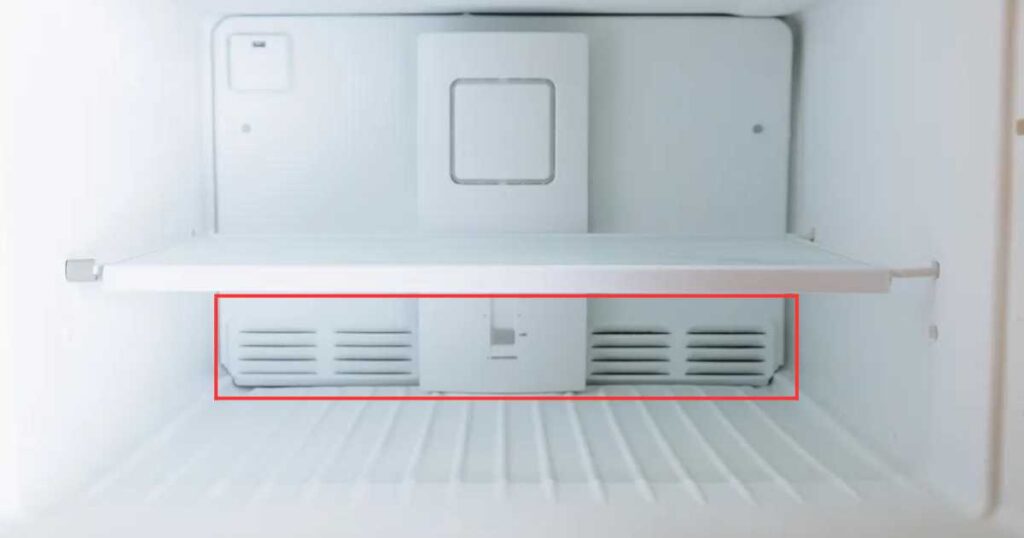
Credit: www.cnet.com
Why Is Cleaning Air Vents Important?
Regularly cleaning air vents in refrigerators is crucial to maintain proper airflow and prevent buildup of dirt and debris. It helps to ensure efficient cooling and prolong the lifespan of your refrigerator.
Maintaining clean air vents in your refrigerator is crucial for several reasons. By regularly cleaning the air vents, you can:
Prevent food contamination:
Food particles and debris can accumulate in the air vents over time, leading to the growth of bacteria and mold. This can contaminate the air circulating inside the refrigerator and potentially affect the quality and safety of the food stored.
Cleaning the air vents helps minimize the risk of foodborne illnesses and ensures that your food remains fresh and healthy.
Improve energy efficiency:
When air vents become clogged with dust, dirt, and debris, the refrigerator’s cooling system has to work harder to maintain the desired temperature. This extra strain on the system can result in increased energy consumption and higher electricity bills.
Regularly cleaning the air vents allows for better airflow and helps the refrigerator operate more efficiently, saving energy and lowering your utility costs.
Extend the lifespan of the refrigerator:
Over time, the accumulation of dust and debris in the air vents can hinder the proper functioning of the refrigerator’s components, such as the compressor and evaporator coils. This can lead to excessive wear and tear on the system, potentially shortening the lifespan of your refrigerator.
By keeping the air vents clean, you can prevent unnecessary strain on these vital components, ensuring that your refrigerator lasts longer and performs optimally.
Regularly cleaning the air vents in your refrigerator not only maintains a hygienic environment for your food but also promotes energy efficiency and prolongs the lifespan of your appliance.
By taking a few simple steps to keep the air vents clean, you can enjoy fresh and safe food while maximizing the performance and longevity of your refrigerator.
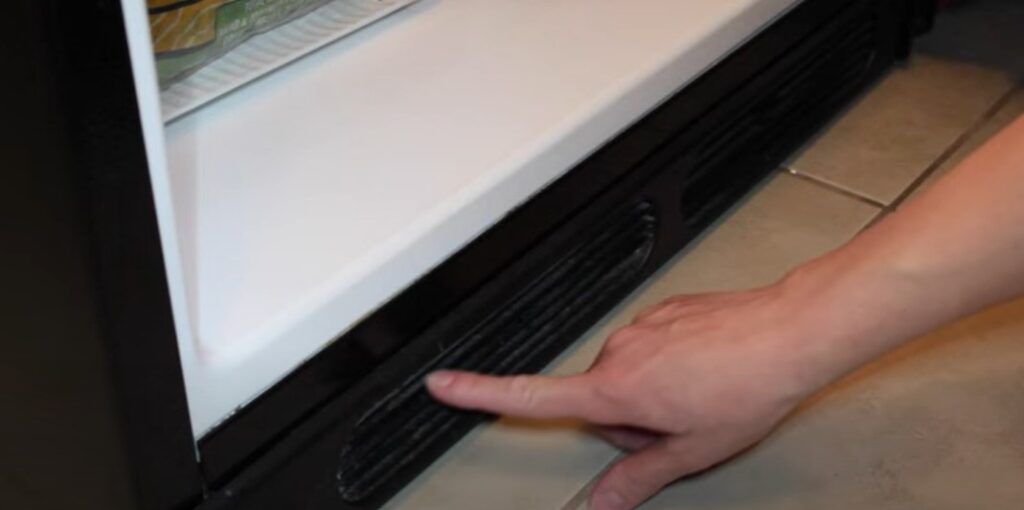
Tools Needed For Cleaning Air Vents
To clean air vents in a refrigerator, you will need a few essential tools such as a soft brush, a vacuum cleaner with a narrow attachment, and a mild cleaning solution. These tools will help you remove dust and debris, ensuring optimal airflow and cooling efficiency.
Cleaning the air vents in your refrigerator is an important maintenance task that ensures optimal performance and prevents any unpleasant odors. To effectively clean these vents, you will need a few essential tools:
- Soft-bristle brush: A soft-bristle brush is perfect for removing dust and debris from the air vents without causing any damage. Gently brush the vents to dislodge any dirt or particles that may have accumulated.
- Vacuum cleaner with brush attachment: Using a vacuum cleaner with a brush attachment is another efficient way to remove debris from the air vents. The brush attachment helps to loosen the dirt, while the vacuum suctions it away.
- Microfiber cloth: A microfiber cloth is ideal for wiping down the exterior of the air vents. It effectively captures any remaining dust or grime, leaving the vents clean and shiny.
- Mild detergent: In some cases, the air vents may require a more thorough cleaning. A mild detergent can be mixed with water to create a solution for wiping down the vents. Ensure that the detergent is gentle and suitable for use on refrigerator surfaces.
- Toothbrush: For stubborn or hard-to-reach dirt, a toothbrush can be handy. Its small bristles can easily reach corners and crevices, allowing you to clean the air vents more effectively.
Now that you have an understanding of the tools required, let’s move on to the next steps of cleaning the air vents in your refrigerator.
Steps To Clean Air Vents In Refrigerator
Regularly cleaning the air vents in your refrigerator is crucial for maintaining its efficiency. Follow these steps to ensure a clean and fresh environment inside your fridge.
Step 1: Unplug The Refrigerator And Remove All Food
- Begin by unplugging the refrigerator from the power source to ensure safety.
- Take out all the food items from inside the refrigerator and set them aside.
Step 2: Locate The Air Vents
- Find the air vents in your refrigerator. They are usually located at the back, top, or sidewalls of the fridge compartment.
- Take note of the number and position of the vents for effective cleaning.
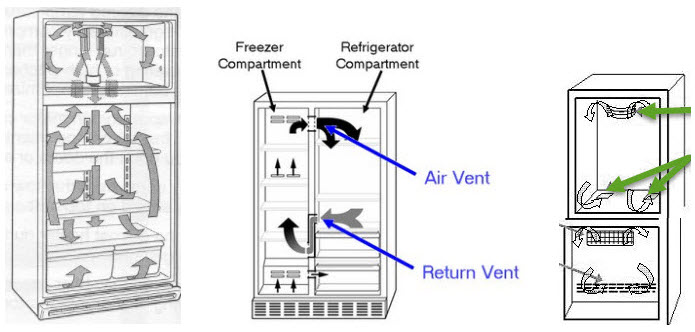
Step 3: Use The Soft-Bristle Brush To Remove Loose Debris
- Take a soft-bristle brush and gently brush off any loose debris or dust from the air vents.
- Be careful not to damage the vents while cleaning.
Step 4: Vacuum The Vents To Remove Stubborn Dirt And Dust
- Use a vacuum cleaner with a brush attachment to remove stubborn dirt and dust from the vents.
- Glide the brush attachment along the vents to suck up any trapped particles.
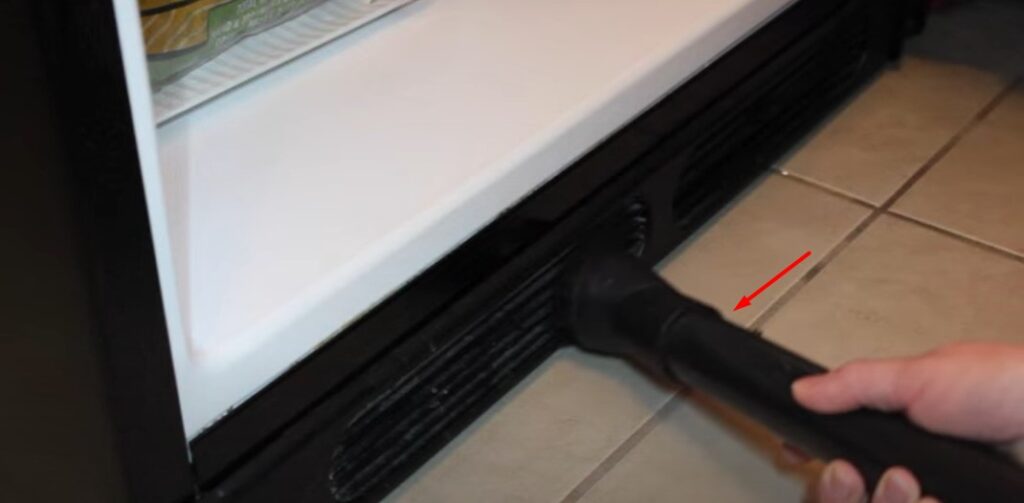
Step 5: Dampen A Microfiber Cloth With Mild Detergent
- Dampen a microfiber cloth with a mixture of mild detergent and warm water.
- Make sure the cloth is not dripping wet but slightly damp for effective cleaning.
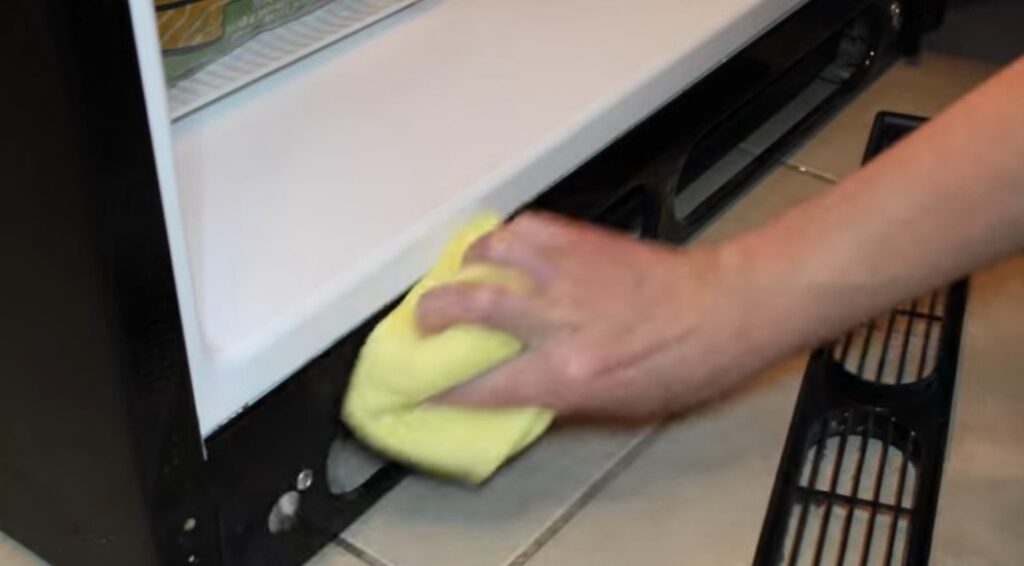
Step 6: Gently Wipe Down The Vents And Surrounding Area
- Using the dampened microfiber cloth, gently wipe down the air vents and the surrounding area.
- Pay attention to any accumulated dirt or grime, ensuring thorough cleaning.
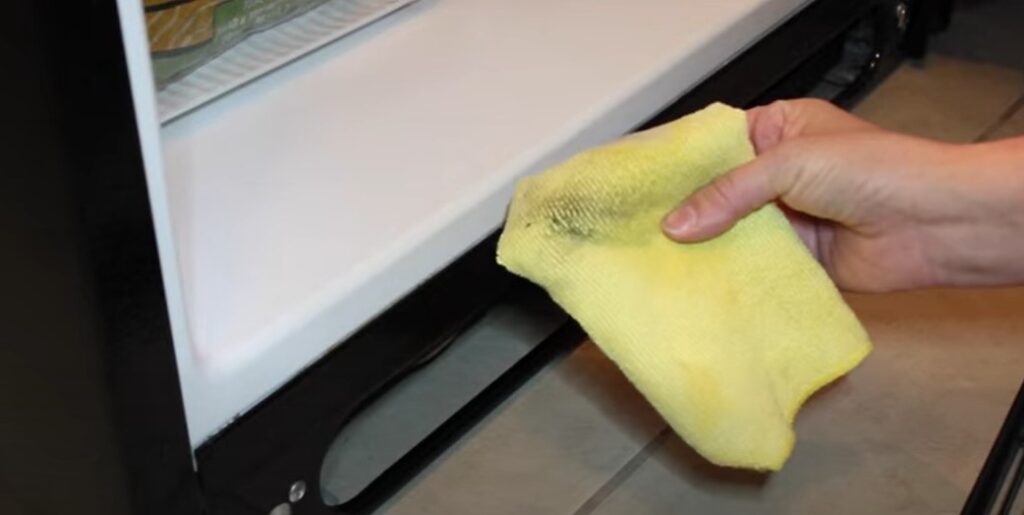
Step 7: Use A Toothbrush To Clean Hard-To-Reach Spots
- For hard-to-reach spots, use a toothbrush dipped in the mild detergent solution.
- Gently scrub the areas around the vents to ensure all dirt is removed.
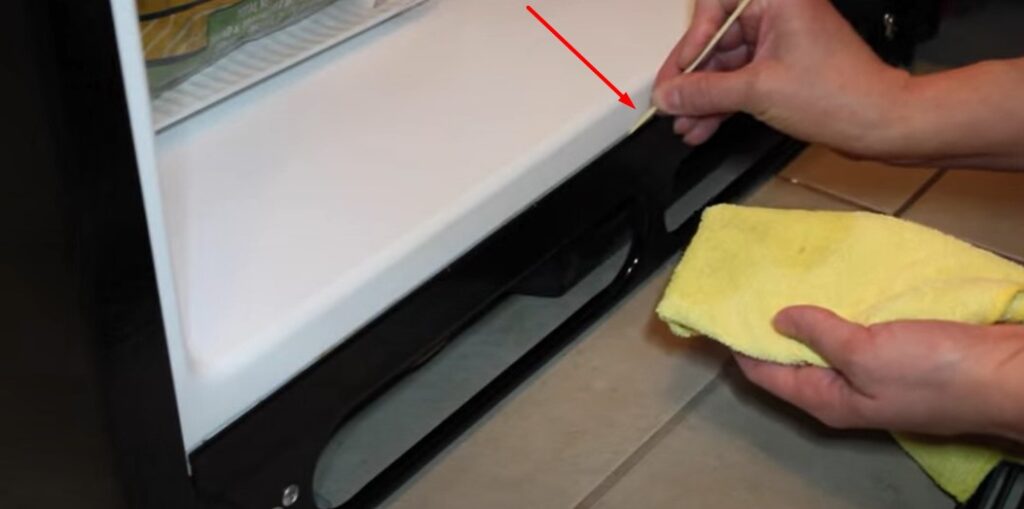
Step 8: Dry The Vents With A Clean Microfiber Cloth
- Take a clean microfiber cloth and carefully dry the air vents and the surrounding area.
- Make sure there is no moisture left behind that could form mold or cause damage.
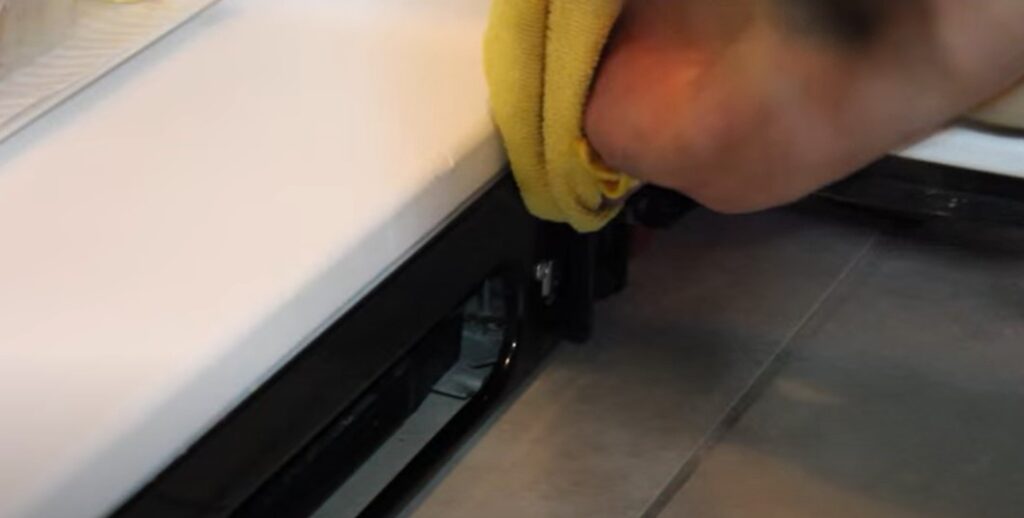
Step 9: Plug The Refrigerator Back In And Restock With Food
- Reconnect the refrigerator to the power source once the vents are completely dry.
- Place all the food items back into the refrigerator and organize them properly.
Follow these steps periodically to maintain clean and efficient air vents in your refrigerator. Regular cleaning will help improve the appliance’s performance and ensure your food stays fresh for longer.
Maintenance Tips To Keep Air Vents Clean
Regular maintenance is crucial for clean air vents in your refrigerator. Follow these tips to keep your vents free from dust and debris, ensuring optimal performance and extending the lifespan of your appliance.
Regularly Check And Clean The Vents Every Few Months:
- Conducting regular checks and cleaning of the air vents in your refrigerator is crucial for maintaining optimal performance and avoiding potential issues. Here’s how you can ensure proper maintenance of your air vents:
- Gently remove any visible dust or debris from the vents using a soft brush or a microfiber cloth.
- If the vents are removable, take them out and soak them in warm water with mild dish soap to effectively clean them.
- Rinse and dry the vents thoroughly before placing them back into the refrigerator.
- Utilize a vacuum cleaner with a narrow nozzle attachment to remove any dust or debris from the vent openings.
- Ensure that the airflow is unobstructed by inspecting the interior of the refrigerator for any blocked vents.
Avoid Placing Items In Front Of The Vents:
- It’s important to keep the area around the air vents clear to prevent restricted airflow and ensure proper cooling. Here are some tips to avoid blocking the vents:
- Avoid placing items, such as food containers or drinks, directly in front of the vents.
- Organize the contents of your fridge strategically, ensuring that items are placed away from the vent area.
- Keep an eye out for any items that may accidentally obstruct the vents and promptly relocate them to a different spot.
Keep The Refrigerator Temperature At Optimal Levels:
- Maintaining the proper temperature in your refrigerator is essential for preserving the freshness of your food and keeping the air vents clear. Follow these recommendations:
- Check and adjust the temperature setting according to the manufacturer’s instructions.
- Aim to keep the refrigerator temperature between 35°f (2°c) and 38°f (3°c).
- Avoid setting the temperature too low, as it can lead to excessive cooling and unnecessary strain on the vents.
Clean Spills And Leaks Promptly:
- Spills and leaks inside your refrigerator can not only be unhygienic but can also affect the functionality of the air vents. Here’s what you should do:
- Immediately clean up any spills or leaks using a mild detergent solution and a clean cloth.
- Pay close attention to the areas surrounding the air vents to prevent any residue buildup.
- Regularly inspect your refrigerator for potential leaks and address them promptly to avoid any long-term damage.
FAQs: How to Clean Air Vents in Refrigerator?
Clean the air vents in your refrigerator easily with these simple steps. Maintain proper airflow and prevent buildup of dust and debris for optimal cooling efficiency.
Can I Use A Hairdryer To Speed Up The Drying Process?
When it comes to cleaning the air vents in your refrigerator, you may wonder if using a hairdryer can help speed up the drying process. Here’s what you need to know:
- Using a hairdryer to dry the air vents is not recommended. The high heat from the hairdryer can cause damage to the delicate components of the refrigerator’s interior.
- Instead, it’s best to allow the air vents to naturally air dry. This may take a bit longer but ensures the safety and longevity of your refrigerator.
How Often Should I Clean The Air Vents In My Refrigerator?
Keeping the air vents in your refrigerator clean is essential for optimum performance. Here’s a guide on how frequently you should clean them:
- Cleaning the air vents once every three months is generally recommended. This helps prevent the buildup of dust, debris, and bacteria that can affect the efficiency of your refrigerator.
- However, if you notice any visible dust or dirt on the vents or have pets that shed, it’s advisable to clean them more frequently, around every six to eight weeks.
Can I Use Vinegar Instead Of Mild Detergent For Cleaning?
When it comes to selecting the right cleaning agent for your refrigerator’s air vents, you may wonder if vinegar can be a suitable alternative to mild detergent. Here’s what you should know:
- Yes, vinegar can be an effective and natural alternative to using a mild detergent for cleaning the air vents in your refrigerator.
- To use vinegar, mix equal parts of white vinegar and water in a spray bottle. Liberally spray the mixture onto a microfiber cloth or sponge, and gently clean the air vents.
- Vinegar’s acidic properties help in removing dirt, grime, and odors, leaving your air vents clean and fresh.
Where Are The Air Vents On A Refrigerator?
Air vents on a refrigerator are typically located in the freezer compartment and the back or bottom of the unit. The freezer vents allow cold air to circulate, keeping items inside frozen. These vents are often found at the rear of the freezer compartment or along the inner walls.
The back or bottom vents, known as condenser vents, help to release heat generated by the refrigerator’s cooling system. It’s important to ensure these vents are kept clean and free from obstructions for efficient cooling.
A buildup of dust or debris can restrict airflow and cause the refrigerator to work harder, leading to decreased energy efficiency.
Regularly vacuuming or wiping down these vents will help maintain optimal cooling performance.
What Happens If Refrigerator Vents Are Blocked?
If refrigerator vents are blocked, the cooling efficiency of the appliance can be affected. Blocked vents prevent proper air circulation, leading to temperature fluctuations and potential food spoilage.
Dust, debris, or ice buildup on the vents can obstruct the flow of air, causing the refrigerator to work harder to maintain the desired temperature.
This can result in increased energy consumption and reduced lifespan of the appliance. Additionally, blocked vents can lead to the formation of condensation, which can cause water leaks and damage to the refrigerator’s internal components.
Regularly cleaning and ensuring the proper ventilation of the vents is important to maintain the optimal performance of the refrigerator.
Why Is The Air Not Circulating In My Fridge?
The air may not be circulating in your fridge due to a couple of reasons. Firstly, check if the fan inside the fridge is working properly. If the fan is not running, it could prevent the air from circulating. Secondly, ensure that the vents inside the fridge are not blocked by food items.
Blocked vents can disrupt the airflow, leading to poor circulation. Lastly, check the temperature settings of your fridge. If the temperature is set too high, it can cause the air to not circulate efficiently. Adjust the temperature settings accordingly.
In conclusion, if the air is not circulating in your fridge, check the fan, vents, and temperature settings to resolve the issue.
Why Is My Refrigerator Not Blowing Enough Cold Air?
If your refrigerator is not blowing enough cold air, there could be a few possible reasons. First, check if the temperature settings are correctly adjusted. If they are set too high, it may not provide sufficient cooling. Another reason could be a clogged or dirty condenser coil.
This coil helps release heat from the refrigerator, and if it’s dirty, it can affect cooling efficiency. Check and clean the coil if needed. Additionally, ensure that the fridge door is properly sealed. If there are gaps or leaks in the door gasket, warm air can enter, leading to inadequate cooling.
Lastly, if these steps don’t resolve the issue, there might be a problem with the refrigerator’s compressor or coolant levels. In such cases, it’s advisable to seek professional assistance to identify and fix the problem.
Conclusion
Regular cleaning of the air vents in your refrigerator is a vital maintenance task that should not be overlooked. By following the simple steps outlined in this blog post, you can ensure that your refrigerator runs efficiently and keeps your food fresh for longer.
Cleaning the air vents not only improves airflow and temperature consistency but also prevents the buildup of dust, dirt, and bacteria. This can help prolong the lifespan of your refrigerator and reduce energy consumption.
Remember to unplug the refrigerator, remove the vent cover, vacuum out the debris, and wipe down the vent cover before reassembling.
With just a little time and effort, you can keep your refrigerator running smoothly and maintain a healthy environment for your food. Don’t underestimate the power of a clean air vent in your refrigerator!
